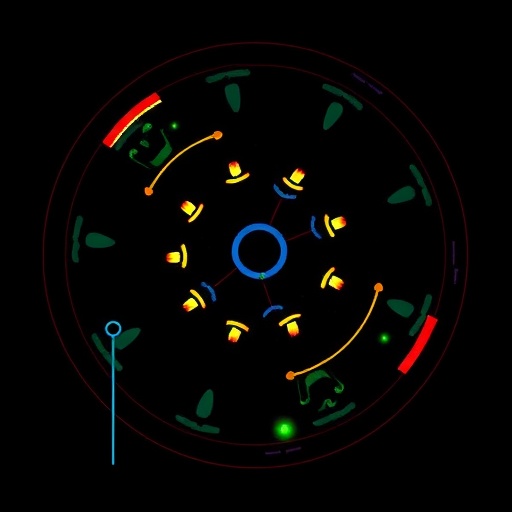In an era where regenerative medicine is rapidly evolving, the pursuit of treatments that can effectively restore or replace damaged tissues remains at the forefront of scientific inquiry. One particularly promising area of research focuses on the intervertebral disc, an essential component of the spinal column that provides cushioning and support. A recent study investigates the potential of ginsenoside Rg1, a natural compound derived from ginseng, in promoting the repair of intervertebral discs. This study not only probes the efficacy of Rg1 as a therapeutic agent but also delves into understanding the underlying ferroptosis mechanism involved in the tissue’s repair.
Intervertebral discs play a crucial role in maintaining spine flexibility and load distribution. However, they are susceptible to degeneration due to aging, injury, or disease, leading to significant pain and mobility issues. Currently, treatment options such as surgical interventions and pharmacological therapies are limited, underscoring the necessity for innovative approaches to enhance disc repair mechanisms. The study in question offers compelling insights into how ginsenoside Rg1 could potentially bridge this therapeutic gap.
Ginsenosides, particularly Rg1, have garnered attention for their anti-inflammatory and neuroprotective properties. These compounds have been shown to influence various cellular processes, promoting proliferation and differentiation. The researchers aim to elucidate whether Rg1 can not only prevent further degeneration of intervertebral discs but also stimulate regeneration. This study builds on existing knowledge regarding the bioactive properties of ginsenosides, situating Rg1 as a candidate for future clinical applications.
The research methodology was rigorous, employing in vitro and in vivo experimental designs to assess the effects of ginsenoside Rg1 on intervertebral disc cells. The team utilized human nucleus pulposus cells, which are vital for disc structure and function, as their primary study model. By exposing these cells to varying concentrations of Rg1, the researchers measured cell viability, proliferation rates, and markers indicative of ferroptosis, a form of regulated cell death linked to oxidative stress and inflammation.
One of the standout findings from the research was Rg1’s ability to significantly enhance cell survival and proliferation in the intervertebral disc cells. The results indicated that Rg1 not only mitigated usual oxidative stress levels that lead to cellular injury but also activated cellular signaling pathways associated with survival. This breakthrough suggests that Rg1 has the potential to revitalize degenerated intervertebral discs, promoting regeneration while circumventing the damaging effects of inflammation.
Moreover, the study’s exploration into the ferroptosis mechanism was particularly noteworthy. Ferroptosis is characterized by the accumulation of lipid peroxides to lethal levels, which can lead to cellular demise. The researchers found that ginsenoside Rg1 counters this mechanism by modulating key genes and enzymes involved in antioxidant defenses. This not only highlights the polypharmacological nature of Rg1 but also introduces a new avenue for targeting disc degeneration by directly addressing the pathways leading to ferroptosis.
The implications of these findings are profound, particularly in the context of an aging global population. With conditions such as degenerative disc disease on the rise, the demand for effective non-invasive treatments is paramount. The potential of Rg1 as an adjunct therapy could revolutionize how clinicians approach intervertebral disc repair. Early stages of treatment using natural compounds could significantly enhance patient outcomes, promoting quicker recovery and reducing the likelihood of surgical intervention.
Furthermore, the broader implications of harnessing plant-derived compounds like ginsenoside Rg1 in biomedicine cannot be overlooked. As researchers continue to uncover the therapeutic potential of various natural products, a shift from synthetic to more holistic treatment modalities appears increasingly feasible and desirable. The integration of traditional medicine with modern neuroscience and cellular biology may lead to innovative strategies to address multifaceted health challenges associated with human degenerative diseases.
As the body of literature supporting the use of ginsenosides expands, this study lays a critical foundation for future research. Large-scale human clinical trials will be required to confirm the safety and efficacy of Rg1 treatment among patients suffering from intervertebral disc degeneration. Such trials will not only validate the current findings but also explore the potential for combination therapies that incorporate Rg1 with existing medical treatments.
In conclusion, this groundbreaking research significantly advances our understanding of the role that ginsenoside Rg1 can play in intervertebral disc repair and underlines its involvement in the ferroptosis mechanism. The promising results provide a compelling case for further exploration and could potentially lead to a paradigm shift in how we treat degenerative disc diseases. Researchers remain hopeful that continued investigation will ultimately yield novel therapeutic strategies that harness the power of natural compounds in regenerative medicine.
The quest for effective treatments that restore spinal health continues, and ginsenoside Rg1 stands poised at the forefront of these efforts. As we move toward an era that increasingly values integrative approaches to health, the implications of such research highlight not only the potential for improved physical health but also the broader impacts on quality of life for countless individuals facing chronic pain and limited mobility. Researchers and clinicians alike are excited to see how these insights will translate into real-world applications, marking a significant step forward in disc degeneration treatment and management.
Subject of Research: Effects of ginsenoside Rg1 on intervertebral disc repair and its role in ferroptosis.
Article Title: Does ginsenoside Rg1 promote intervertebral disc repair? An experimental study insights into ferroptosis mechanism.
Article References: Gong, D., Xia, F., Wang, F. et al. Does ginsenoside Rg1 promote intervertebral disc repair? An experimental study insights into ferroptosis mechanism. J Transl Med 23, 1231 (2025). https://doi.org/10.1186/s12967-025-07047-4
Image Credits: AI Generated
DOI: https://doi.org/10.1186/s12967-025-07047-4
Keywords: ginsenoside Rg1, intervertebral disc repair, ferroptosis, degeneration, regenerative medicine, natural compounds, spinal health.




